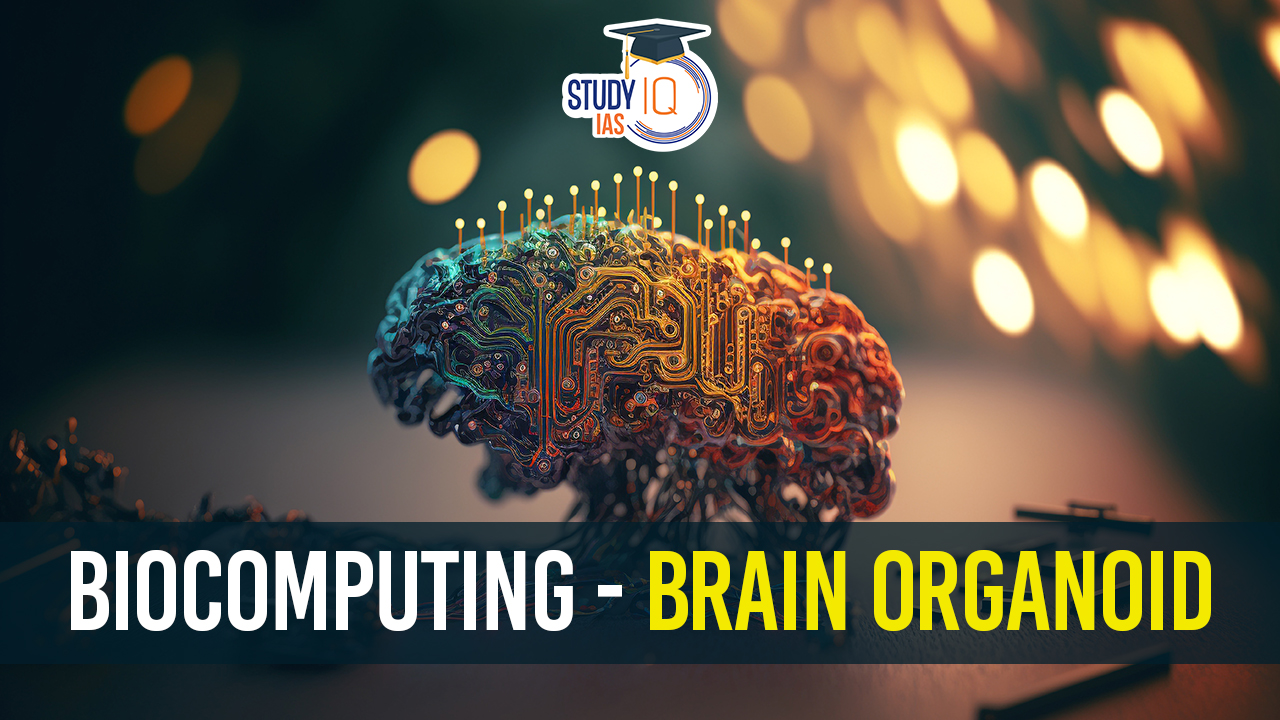Context: Recently, scientists have fused brain-like tissue with electronics to make an ‘organoid neural network’ that can recognise voices and solve complex mathematical problems.
About Biocomputing- Brain Organoid
What is Biocomputing?
- Biocomputing: It uses biological components to perform computational processes.
- Examples: Australian Experiment:
- Cultured brain cells were trained to play table tennis, showcasing the potential for long-term training.
- US Experiment:
- Brain organoids were used to create an “organoid neural network.”
- This network was tested on:
- Speech recognition: Could differentiate between voices.
- Math problem solving: Solved a specific equation type.
- Examples: Australian Experiment:
We’re now on WhatsApp. Click to Join
What is Brain Organoid?
- Brain Organoid: A brain organoid is a self-organising three-dimensional tissue derived from human embryonic stem cells or pluripotent stem cells and is able to simulate the architecture and functionality of the human brain.
- Organoid Neural Networks: Self-organising brain organoids connected to microelectrode arrays (MEAs) can be changed in function to create neural networks.
- It uses brain organoids (3D brain cell aggregates) as a biological neural network.
- Layers:
- Input: Receives external signals.
- Reservoir (Brainoware):
- Composed of the connected brain organoid.
- “Black box” – internal workings untraceable.
- Transforms input signals into mathematical entities for processing.
- Output:
- “Normal” computer hardware.
- Reads and interprets neural activity from the reservoir.
- Demonstrations:
- Predicted a complex mathematical function (Henon map).
- Recognized Japanese vowels with 78% accuracy after learning from audio clips (without external feedback).


 Protection of the Aravalli Range: Import...
Protection of the Aravalli Range: Import...
 Viksit Bharat Shiksha Adhishthan Bill 20...
Viksit Bharat Shiksha Adhishthan Bill 20...
 Jumping Genes: The Revolutionary Discove...
Jumping Genes: The Revolutionary Discove...

























